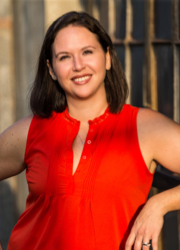Unfortunately, trauma happens. Throughout our community and the world, people are exposed to adverse experiences that affect them for the rest of their lives. At Crossnore School & Children’s Home, they see the effects of trauma on a daily basis. But it isn’t just among the children that they are working with. Crossnore staff are also exposed to trauma. When doing the amazing work that they do to help children and families, they are also exposed to the stories of the children and the trauma that they have experienced. It causes secondary stress and can produce symptoms very similar to the symptoms of a person who has experienced the trauma personally.
About 15 years ago, Crossnore realized it was no longer enough to treat the child who arrived with the need for care, they had to start dealing with the trauma these children had experienced. In addition to caring for the physical needs of the children, Crossnore adopted a holistic approach of caring for the whole child. This made a huge difference in the children, but the staff was now suffering in ways they had not before. Crossnore’s Chief Executive Officer and the Center’s co-founder, Brett Loftis, commented, “Our staff was constantly absorbing the children’s trauma. They began to show secondary stress symptoms from repeatedly hearing the terrible things these children had been through. It was so important for us to be able to help these children heal, but we also needed to protect ourselves and our staff from burning out and feeling the effects of this physically and mentally.” What they decided to do was to look for a way to provide trauma-informed care to the staff.
Research began on the format they would use to implement the care that was needed. They decided to use The Sanctuary Model® from Dr. Sandra Bloom. At the time, she was running the only unlocked psychiatric care unit in the country. The model addresses how chronic stress, adversity and trauma can influence behavior and promote change in the way organizations, also influenced by the same things, are affected. Twelve years ago, this model was put into place to help with the problems they were facing. The difference is undeniable. The staff at Crossnore is now experiencing lower rates of burnout, less mental and physical health problems and less staff turnover.
This really is all about adverse childhood experiences. Between 1995 and 1997 the CDC and Kaiser Permanente did a study on this topic. This study, known as “ACES,” studied over 17,000 people who were mostly white and college-educated. By having them complete confidential surveys about their childhood experiences and current mental and physical health, a correlation was found between childhood trauma and lifelong mental and physical health issues. It also showed that childhood trauma affects people of all kinds, and that trauma is everywhere. Knowing this information and seeing how The Sanctuary Model® could make a difference, Crossnore felt it was their responsibility to help communities and organizations become trauma-resilient. This responsibility, partnered with a vision of helping other organizations become trauma-resilient, became the Center For Trauma Resilient Communities.
The Center, which started about a year ago, was created to help end organizational toxic stress. Knowing what they know now, after seeing what has worked in their organization, Crossnore is on a mission to prepare organizations and their staff before toxic stress becomes an issue. Crossnore is one of only six organizations to achieve national certification three times from The Sanctuary Institute. Crossnore and the Center realize that there is a problem accessing affordable, quality training and the technical assistance necessary for support. The Center is filling the gap by providing all those things to hospitals, domestic violence organizations, early childhood education providers, churches and many other types of businesses and organizations. “We have hired the best trauma trainers in the country, all of whom have a specialization in coaching and training in trauma-informed care,” continued Loftis. “We can look at your organization and create a plan specific to your needs, providing the necessary tools to achieve the best outcome for all.”
To learn more about the Center for Trauma Resilient Communities, please visit https://www.crossnore.org/center-for-trauma-resilient-communities/or e-mail traumaresilient@crossnore.org. Training ranges from three-hour sessions to three-day intensives and can be customized for your organization.























